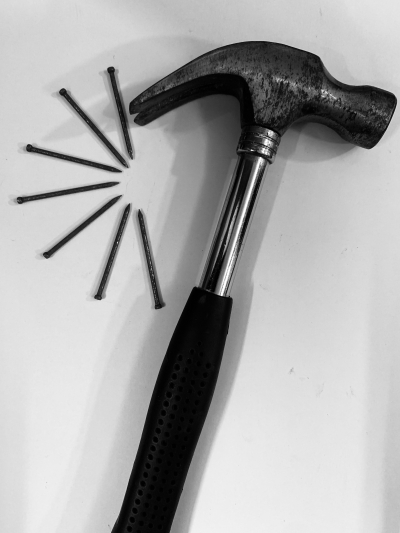It is Time to Move Past Maslow's Hammer in Pain Management
Abraham Maslow first published the famous proverb “if all you have is a hammer, then everything looks like a nail,” in 1966 in The Psychology of…

Abraham Maslow first published the famous proverb “if all you have is a hammer, then everything looks like a nail,” in 1966 in The Psychology of Science. Maslow’s Hammer, otherwise known as The Law of the Instrument, is a cognitive bias that involves an over-reliance on a familiar tool. In our fee-for-service medical system, many examples of Maslow’s Hammer can be found in the medical profession, but nowhere is it better personified than in the specialty of Pain Management.
Pain Management as a discipline emerged as a subspecialty of Anesthesiology. In 1990, nearly 80% of all pain management doctors were anesthesiologists. At the time, much of the knowledge of anatomy, physiology, and pharmacology required to render a patient insensible to pain in the operating room or labor-and-delivery suite was homogenous with what was known about chronic pain. So, the treatment of pain was a natural extension of an anesthesiologist’s practice.
As the science of the transmission of pain grew, so did the formalization of the academic training. As of 2018, there were 100 pain management fellowship programs, most of which attracted physicians who had completed anesthesiology, physical medicine and rehabilitation, neurology, or neurosurgery residency programs. Today, most curriculums include exposure to outpatient chronic pain, inpatient chronic pain, interventional procedures, inpatient acute pain, cancer pain, palliative care, and pediatric pain. However, current fellowship programs vary as widely in their focus as much as the backgrounds of the candidates who apply.
The only thing consistent about pain management fellowship programs is that they all shout from the rooftops the importance of comprehensive training and the need for a multidisciplinary approach to the evaluation and management of pain. “Pain is a bio-psycho-social disease,” or so the mantra goes. However, many fellowship trained doctors fail miserably integrating mental health, behavioral medicine, integrative medicine, physical therapy, or even rational medication management into the algorithm. In fact, the favored treatment approach of many alleged pain practitioners today is to focus exclusively on interventional procedures.
Despite the evidence that pain is a complex and multidimensional problem our communities have been infused, over the past ten years, with procedure-obsessed interventionalists. Some even title themselves as Interventional Pain Management (IPM) Specialists and adopt a narrow focus on an anatomical “pain generator” as the exclusive target of their pain treatment and operate far outside the framework of the biopsychosocial model.
These IPM Specialists rely exclusively on injection procedures and proudly declare their inability, or in reality, their unwillingness to assist with complete management of the pain problem by prescribing rational medications, organizing physical rehabilitation, and directing cognitive behavior counseling… as if all pain problems can be fixed or even slightly improved exclusively at the tip of a needle...Maslow’s Hammer. This hammer approach leaves primary care and other referring physicians in a conundrum with pain patients that still need to be taken care of despite a laundry list of injections that were haphazardly administered with wanton disregard for the patient’s true problem.
It behooves all providers that refer their patients for pain evaluation and treatment to actively seek out a pain specialist with a multidisciplinary mindset who is willing to wade through the difficult elements of pain management instead of just allowing their patients to be mistreated by needle brandishing proceduralists or by interventional radiologists that provide short-term consultation only and rely heavily or solely on IPM as an exclusive therapeutic modality. This approach directly disregards the suffering dimension of the pain experience and is grossly inadequate in providing quality pain care for the vast majority. Worse yet, in a strictly IPM environment, the patient can be harmed by propagation of the belief that all their pain can be cured by the needle and that they have no responsibility to take an active role in their own pain management.
Acute pain is usually just a symptom of an anatomic derangement, but chronic pain is a complex primary disease. Today’s pain specialist must be able and willing to utilize all rational stratums of care in evaluating complex pain problems, prescribe and manage pain relieving medications, and act as an integral part of a real or virtual multidisciplinary team. In other words, if the specialty of Pain Management is ever going to be taken seriously, the pain management toolbox is going to have to contain more than a hammer…or needle.
Please check back regularly for recent articles, information, and insights from Dr. Essay regarding relevant Medical Legal Consulting news.